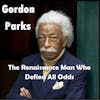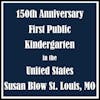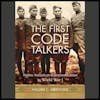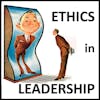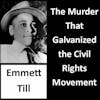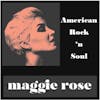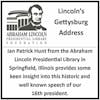Resolving Tangled Title Issues and Bringing Vacant Properties Back to Life: The Neighborhood Advocacy Program's Impact in St. Louis
A conversation with Peter Hoffman, Managing Attorney for the Neighborhood Advocacy at Legal Services of Eastern Missouri. The program is a non-profit law firm that provides free civil legal aid in eastern Missouri, focusing on neighborhood advocacy. The interview discusses the program's work, including addressing vacant and abandoned properties, engaging with volunteer lawyers, and focusing on community development. Also included are local attractions in St. Louis area.
In this episode of St. Louis In Tune, host Arnold Stricker interviews Peter Hoffman, Managing Attorney for Neighborhood Advocacy at Legal Services of Eastern Missouri. The discussion revolves around the organization's crucial role in helping communities address the issues of vacant and abandoned properties, one of the biggest challenges faced by neighborhoods in St. Louis city.
The conversation also highlights how being proactive at community level leads to creating neighborhoods of opportunities, need for estate planning, and how the Neighborhood Advocacy Program, launched in 2018, provides free legal support to neighborhood associations. Hoffmann emphasizes the importance of volunteers' contributions to the program and concludes by referring 'homegrown' talents in St. Louis. The episode ends with recommendations for local historical and cultural sites to visit.
[00:00] Introduction to Promises and Community Action
[00:37] Welcome to St. Louis in Tune
[01:02] The Importance of Civility and Stereotype Challenge
[01:45] Introduction to Legal Services of Eastern Missouri
[02:02] Understanding the Work of Legal Services of Eastern Missouri
[03:54] The Role of Volunteer Lawyers
[05:13] Neighborhood Advocacy Program: A Focus on Vacancy and Property Abandonment
[07:23] Addressing Vacant and Abandoned Properties: Challenges and Solutions
[11:40] The Complexities of Property Title Resolution
[14:47] The Role of the City in Addressing Vacant Properties
[17:54] How Legal Services of Eastern Missouri Receives Cases
[20:50] The Importance of Estate Planning
[22:27] Addressing Persistent Nuisance Problems
[23:56] Saint Louis In Tune: Mission and Reach
[25:41] Dred Scott Heritage Foundation: A Call to Action
[26:58] Interview with Peter Hoffman: Journey into Public Interest Law
[31:14] Neighborhood Advocacy Program: Voices from the Community
[36:00] Appreciation for Volunteers and Nonprofits
[40:53] Exploring St. Louis: Historical Sites and Museums
- St. Peter's Cemetery
- Chuck Berry's House
- Old Des Peres Church
- George Washington Carver Garden
- Scott Joplin House
- Griot Museum
- George P. Vashon Museum of African American History
- Dred Scott's Grave at Calvary Cemetery
- Field House Museum
[45:48] Closing Remarks and Invitation to Engage
Links mentioned in the show:
Legal Services Neighborhood Advocacy
Legal Services Neighborhood Advocacy-The First Five Years
Legal Services of Eastern Missouri
Interview with Lynn Jackson-Dred Scott's Great, Great Granddaughter-Part I
Interview with Lynn Jackson-Dred Scott's Great, Great Granddaughter-Part II
This is Season 7! For more episodes, go to stlintune.com
#neighborhoodadvocacy #legalservices #abandonedproperties #estateplanning #cityofstlouis #titlesearches #titleresolution #vacantproperties #nuisanceproperties
Thank you for listening. Please take time to rate us on Apple podcasts,
Podchaser, or your favorite podcast platform.
Conversation with Peter Hoffman: Neighborhood Advocacy with Legal Services of Eastern Missouri
Arnold: [00:00:00]
When you hear about promises, what do you think? Promises made between a husband and wife, between parents and children. How about this one? Politicians and the people that they serve; I'm not talking about any of those right now, but we're going to talk about a group that their promise to the community is action, justice, and hope. They act for others, they are a voice for justice, and their actions provide hope. Next on St. Louis in Tune.
Well, welcome to St. Louis in Tune with Arnold Stricker and Mark Langston. Thank you for joining us for fresh perspectives on issues and events with experts, community leaders, and everyday people who are driving change and making an impact that shapes our society and world. Mark Langston is on assignment today and we're going to get right into our interview, but first we have to Return to Civility like we always do.
Return to Civility
Arnold: [00:01:02] Recognize that a person's intelligence, potential, and ability to contribute are unconnected to their physical characteristics. Challenge yourself to find three things that contradict whatever your first stereotypical impression was. And sometimes you see people, whether they're driving down the road, whether they're walking down the street, whether you're in the store or wherever you are, maybe at work, maybe at a ballgame or something, you Find things that automatically bring up some kind of stereotype, but challenge yourself to find three things that contradict that.
Legal Services of Eastern Missouri-Neighborhood Advocacy
Arnold: [00:01:35] A Return to Civility, recognize that a person's intelligence, potential, and ability to contribute are unconnected to their physical characteristics. And one group that does that very well is the Legal Services of Eastern Missouri. Peter Hoffman, who's Managing Attorney for the Neighborhood Advocacy, is here today to talk about that group and also the work that they do.
Peter, welcome to St. Louis In Tune.
Peter: [00:02:01]
Thanks for having me Arnold.
The Work of Legal Services of Eastern Missouri
Arnold: [00:02:02]
So first of all, what is Legal Services of Eastern Missouri and what do they do?
Peter: [00:02:08]
Right? So we're a nonprofit law firm legal services of Eastern Missouri has been around a little over 50 years, but the idea of legal aid organizations or volunteer lawyers pro bono lawyers goes back more than a hundred years legal services is the largest provider of free civil legal aid in eastern Missouri.
There are four legal aides throughout the state. We cover 21 counties in eastern Missouri, so we've got a satellite office in Union, one in Hannibal. Our main office is downtown at the Peabody, and then my office is in Old North St. Louis; serving neighborhoods on the city's North side. We don't handle any criminal matters, so we can't help you fix a parking ticket or anything like that.
But if you have somebody who needs civil legal assistance and cannot afford a lawyer, contact us. Either we have a staff attorney who can specialize in the area, or we've got a volunteer or pro bono lawyer who might be able to help take that case. And that's everything ranging from a tenants facing evictions to victims of domestic violence who need orders of protection from their abuser.
We have programs that serve individuals in consumer cases pretty much any type of civil legal need. If somebody needs a lawyer, they can contact legal services and we don't charge.
Arnold: [00:03:21]
As I've seen the listing here, you have consumer law programs, education, justice programs connecting kids to coverage, just a wide range. It's like a big umbrella of services that are offered.
Peter: [00:03:35]
We're a big old law firm. I think we're probably one of the largest law firms actually in the St. Louis area. We have about a hundred and 10, I think, or so, attorneys, paralegals, support staff, social workers being able to provide all types of holistic legal advocacy to the people who can't afford lawyers.
The Role of Volunteer Lawyers
Arnold: [00:03:53]
And those aren't all paid. Some of the work is done pro bono, or?
Peter: [00:03:56]
So our staff are paid but we do rely on a large number of volunteer lawyers. Those are sometimes big firms who want to take on cases and volunteer. There's sometimes retired attorneys who want to keep their skills sharp or their new attorneys who are maybe hanging a shingle, but I want to get more practical experience.
And so our phone never stops ringing at legal services. That's a blessing and a curse to be a free lawyer; everybody wants to call you and has to pick your brain and ask you questions but we really are here to help. And and we cannot do it if not for volunteer lawyers.
We just don't have the capacity as staff, as an organization to meet that need without volunteer lawyer support. So it's really critical if anybody's interested, any of your listeners want to volunteer for legal services to contact us. We have a volunteer lawyers program that help connect them with opportunities.
Arnold: [00:04:46]
And I want to give that number out. Is that the 314.256.8778 number?
Peter: [00:04:52]
That's right. And they can also visit our website and enter in information both for clients. So if anybody's listening and they need legal assistance, they can visit our website, learn more about what type of services we provide, apply for services, but also if anybody wants to volunteer; then go to lsem.org and fill out some information and we'll get in touch with them and we'll be grateful for their support.
Neighborhood Advocacy Program: A Focus on Vacancy and Property Abandonment
Arnold: [00:05:13]
The Neighborhood Advocacy Program that is the program that you manage, you're the managing attorney for that that serves St. Louis City area residents and community based organizations to prevent and reduce vacancy and property abandonment. And this is going on, what, your sixth year now? You're getting ready to celebrate six years?
Peter: [00:05:31]
Yeah, that's right. We'll be six April 1; I think is the date, is our anniversary date. So we're a relatively new program within legal services, and we're a little bit different too. So a lot of those services I described a second ago are really geared towards providing direct legal assistance to individuals.
Our program is one of two what we call community development programs, and that our clients are not often individuals. We have one program that serves small startups. They're the micro enterprise program. They help get nonprofits set up, legally established, paperwork filed with the state or with the federal government.
So that's one of our community development programs and then ours is really serving the sort of resident led groups where many of our clients call home. So our name as it might indicate is really indicative of what we do is we represent neighborhoods. The city of St. Louis is home to dozens and dozens of place based community organizations. These could be neighborhood associations or what are called community development corporations, which are sometimes like, neighborhoods on steroids, they get some federal money. Maybe they will get some grant money and they'll build housing, create affordable housing through construction.
The neighborhood advocacy program, our focus is really on serving neighborhoods at the resident level at the neighborhood level. We want to think about where our clients go home to each day as a, as an organization that's dedicated to combating poverty. Sometimes it's not enough to just serve the direct legal needs of that particular individual.
We need to think about. Where are they coming home to? Are they coming home to a safe neighborhood? Are they coming home to a neighborhood of opportunity so that they have opportunities to climb out of poverty? And so we started the neighborhood advocacy program to do just that. And in 2018 is really look at place based solutions to make the quality of life better in the neighborhoods where most of our clients call home.
Addressing Vacant and Abandoned Properties: Challenges and Solutions
Arnold: [00:07:23]
So let's unpack that a little bit and give us an example of something that maybe the group has recently accomplished or for an individual and or for a neighborhood.
Peter: [00:07:32]
Sure. The one of the biggest quality of life issues for our clients is the large number of vacant and abandoned houses. So a lot of our programming really is focused around that. How do we prevent property from becoming vacant and abandoned? And then once it is vacant and abandoned, how do we work with the community to get that property back to productive use? So we really come at that issue from two sides.
One case I was just reviewing this afternoon, a pretty common fact scenario. Somebody's living in their house and but they're not entitled. It was originally in mom's name or in dad's name, and they passed away. But mom or dad didn't have any estate plan or any legal Documents in place that says, when I die, that property goes from me to child. So the child may be living there.
And when I say child, adult child, they could be 30, 40, 50 years old. They're paying the taxes. They're keeping up the property. They're cutting the grass or living there, paying utilities, but their name's not entitled. And so a large portion of what we do is help resolve those types of issues. And the legal field that's called heirs property.
H E I R S like you're an heir of the property. And basically what we try to do is we cobbled together who has a legal interest in that property and then draw up the paperwork for that family so that they can keep that property in the family. They can get the property in their name. Let's say they need to go get a bank loan or they let's say need to sell that property to move into assisted living. They can't do that unless they have good title. So a lot of our work is really working with families to preserve home ownership by resolving those tangled title issues allowing them to transfer that property on to future generations to create wealth, borrow against it if they need home repairs.
So that's one bucket of service. The other bucket of service really relates to getting these vacant and abandoned properties back to productive use. And when we drive by or see a vacant and abandoned property, we'll often see the physical blight. So we'll see the broken windows, we'll see the trash, we'll see the overgrowth, the gutters hanging off.
But usually what underlies that is a legal blight. Maybe that owner is dead and their children aren't anywhere to be found. Maybe that property was bought as a package from some investor on the other side of the globe, increasingly. And they sold off one or two and the rest of them, they're just left to abandon.
So we need to identify who those owners are, clear those title issues, find a path. And we often find a path through the court to get that property back to productive use. So we try to tackle the issue of vacant abandoned properties. Neighborhood revitalization and prevent further deterioration or instability in the neighborhoods in any way we can, both on the preventative side and then some remedial measures when it's too late to prevent the property from becoming abandoned.
Arnold: [00:10:24]
And knowing how many abandoned properties are in the city of St. Louis, I would imagine that your in box is full.
Peter: [00:10:30]
The phone never stops ringing. I can tell you our inbox is full. Yeah, there's 24, 000 vacant properties, I think in the city of St. Louis alone, not all of those are buildings. I think there's a general rule of half, so maybe 12, 000 or something like that are buildings in the city of St. Louis. One kind of common misconception is that the city owns all of these buildings. And that's not true. There's actually more privately owned vacant deteriorated buildings than what the city owns.
Most of that's privately owned. So again, the shell companies, the out of state investors, maybe people who come into a property with really good intentions, Hey, I'm going to fix this thing up. But they don't realize how hard it is to manage property, how hard it is to manage property in a low income neighborhood.
And the wheels fall off and they walk away and somebody's got to clean up that mess. So we work with neighborhoods to prioritize. We're not going to be able to litigate our way out of this problem. We're not going to be able to. Lawyer our way out of this problem, but I think there are some legal tools that are really helpful to neighborhoods to get these properties back to productive use.
So we try to work with those neighborhoods where the vacancy has the biggest impact on the community, set some priorities, and hopefully make some good things happen.
The Complexities of Property Title Resolution
Arnold: [00:11:40]
So on average Peter, how long would you say it takes one of those properties to get titled correctly.
Peter: [00:11:46]
It all depends. I know a lawyer's favorite answer to a question; it depends and it really does though. So, on the prevention side, the case I was talking about earlier where the owner comes in or the property owner comes in but they're not entitled; sometimes those cases can take years and years.
I actually was talking to one of our volunteer lawyers before I came over to the studio. She's had this case for three years because mom and dad died, but they had five children. One, two, three of their children are dead and then their children take that interest in the property. So over time, if people don't have proper legal documents in place, the title just gets more and more fractured and it's more difficult to put the pieces back together.
We're mailing off documents to California and New York and Chicago, where all the children or the grandchildren might live now. And we say, hey, you have a one 892nd interest in a property in Jeff Vanderloo or somewhere like that and they said, what are you talking about?
I didn't sign anything. I don't own this. And it's technically under law you do, you have a fractional interest because you are the heir of the deceased owner. So sometimes they can take years. Sometimes they can take weeks.
We'll have other cases where there's just one sibling. I am the only child of my parents. My parents died a few years ago. No estate plan. No will. No beneficiary deed. No trust. It's just me. In that case, it's a pretty simple application of the law to the facts. You are the only surviving heir. We can record an affidavit and get you into title pretty quickly.
On the other side, once the property is abandoned, we also have kind of a range of outcomes and it depends. On all kinds of factors, who the owner is, where the owner is the owner responsive is there encumbrance on the title? Is there a old mortgage that was never released? Sometimes we will send let's say we'll represent a neighborhood association and they'll be saying, man, we've been calling the city on this problem property for years and years and nothing ever gets better.
Peter, can you and your team take a look at this? And we'll take a look and we'll see, yeah, the owners out of Utah are somewhere like that, and it's a dissolved LLC and there was maybe some, a hard money lender involved and the businesses, the owner's gone out of business and maybe there's a judgment involved in there, a sewer lien.
We can file something in court to try to acquire control of that property, get it fixed up and then return title to the neighborhood or to their development partner that can take years. Sometimes we'll send a letter to that owner in Utah or wherever it is and say. Your property is a problem.
It's been in violation of ordinance for years and years. And they'll say, Hey, thanks for bringing that to my attention. We'll go ahead and sell it or we'll donate it or we'll fix it up or we'll tear it down. So I wish I could say that there's an average, but it really ranges anywhere from a couple of weeks to, three, four or five years. Sometimes it just depends on how complicated the facts are and what happens once you start poking the sleeping bear a little bit.
The Role of the City in Addressing Vacant Properties
Arnold: [00:14:47]
I can hear people in the listening audience saying why isn't the city doing this?
Peter: [00:14:53]
So the city does do it. And we have to also remember that The city of St. Louis has experienced population decline for 70 years, and with that comes tax revenue. And this is one of these problems that is a wicked problem. It, feeds off of itself. And every time a property becomes vacant or abandoned that often means that there's not now tax revenue to support the building division or the forestry division or whatever division of the city it is that would maintain that property to, enforce the code.
So it is a problem that each time it happens, it creates less resources for the city to solve the problem. That said, the city does have a number of enforcement tools that it uses to help address vacant and abandoned properties. Code enforcement is probably the most common one that people think of, maybe somebody's been on the wrong end of a building division inspector and they get that notice about, oh, you got chip and paint on your garage or something.
That's the same type of code enforcement the city can use for vacant and abandoned properties. The problem with that comes when you've got that out of state owner when you've got a shell company, you really [00:16:00] can't get them into municipal housing court. Their best defense is usually just not to show up.
So you need a little bit bigger of a stick and cities have their hands tied and what legal actions they can bring to divest owners of property. There are a government entity property rights for good reason are sacred in this country. We are very, as Americans hesitant to let government just take property, there has to be due process people have to get noticed.
It can be a really labor intensive to solve. And it's not that the city isn't doing that. I think they are. But these private statutes, I think, are really a way to supplement code enforcement. So when the usual system isn't working, when things are stuck, and maybe the city doesn't have the time or the resources to dig in a little bit deeper and try, filing something in circuit court rather than municipal court or trying to move that property towards, for instance, the tax sale, which is another thing the city can do to help move these properties back to market.
Then we try to step in. So usually our involvement happens after, we've been able to look at the city's record and see, okay, the city has tried this and for whatever reason, they're not getting very much traction. Let's dig in a little bit deeper as a. entity is a private nonprofit representing a private nonprofit.
We've got a little more free time on our hands than the city. That's trying to drink out of a water, out of a fire hose, right? So it just allows us because we have fewer cases to drill down a little bit deeper. When maybe some of the conventional. Code enforcement mechanisms just aren't for whatever reason able to get the outcomes that neighbors expect.
How Legal Services of Eastern Missouri Receives Cases
Arnold [00:17:44]:
That makes sense. This is Arnold Stricker with Mark Langston of St. Louis In Tune. We're talking to Peter Hoffman, he's the managing attorney for the neighborhood advocacy Legal Services of Eastern Missouri. And as you were talking about that Peter, I was thinking, individuals or a neighborhood association or even the city do they come to you and how do they come to you?
Like in the last example that you gave, and does the city ever reach out and say, hey legal services, neighborhood division, can you help us with this? Or a neighborhood association obviously does, or do individuals knock on the door or email you or pick up the phone and call and say, Hey, I need help with this.
How does, how do you get these leads generally?
Peter: [00:18:22]
Yeah, all of that. Like I said, the phone never stops ringing. The inbox is always full. But I would say most of the time our clients are our neighborhood associations in the city, and they meet a couple times a month, sometimes in the church basement or the community center around town.
And we, as community lawyers, I think that's where we need to be. That's how we learn what's going on in the city. That's how we learn what's going on in the neighborhoods we serve. And that's where we can hear about these issues and come up with creative ways to help these communities respond to these challenges.
So a lot of the cases. Come to us from going to neighborhood meetings. We've got six attorneys, two paralegals, a bunch of in house volunteer lawyers. We try to go to every neighborhood meeting and every disinvested neighborhood in the city's north side and southeast quadrant that we can because this is how you hear about these things.
And people who live in the neighborhoods know, they know that this house has been falling down for years and years. They know that. This owner is out of business or dead sometimes. So a lot of our referrals for all of our services come through that type of proactive community engagement. And sometimes we'll get up and we'll say, Hey, I'm with legal services.
These are the types of cases that we handle and things we have been able to help with. And that always just opens the door to all kinds of conversations. So that's how we learn what's going on is just through that engagement at the neighborhood level.
Arnold: [00:19:45]
And that was the impetus behind me having you on the show, having gone up to your office and I think you guys were celebrating your fifth anniversary at the time and seeing the work that was being done and the power behind what was happening for individuals and for neighborhoods, it was just amazing. And I wanted to get that work out to the rest of the community here so they could hear exactly what's going on because I don't think unless you go to those community meetings or you're aware of legal services and then this division actually exists; you may not know that you can get some assistance.
Peter: [00:20:20]
Yeah, our clients are always very grateful. It's such a huge, overwhelming problem that we face. We are very proud of all of our outcomes and all we do and, we boast those on our website and in our annual report and we're making pitches to fundraisers and things like that. But, it is nonstop busy.
The Importance of Estate Planning
Peter: [00:20:38]
There's thousands and thousands of tangled titles. This is pretty common thing, unfortunately, for people to pass away without any estate plan in place. This is, I guess the radio version of shouting it from the rooftops. But, let people know, go get an estate plan, go talk to a lawyer.
I know it's terrible to have to go talk to a lawyer, but we're not all that we're not all bad. And it really is valuable to have some sort of estate plan in place. And when I say estate plan, people say I don't own an estate that sounds like a, a big ranch with columns No, everybody has an estate and estate just means everything that you own.
So if you own a car, you've got an estate. If you've got a car and a house that's in a state, if you've got a bank account and you have an estate. Plan for that stuff. Most of that stuff can be transferred to future generations through a beneficiary designation on a bank account or even on a house.
The most common type of estate planning we do for our clients who are of fairly modest means is a transfer on death deed or a beneficiary deed for their house. Do these things. I know you got to spend a little money. I know you got to talk about uncomfortable situations like that but it really saves so much.
Hardship for your family members and your community. Like I said, a lot of the reason these houses become vacant is because no, but nobody's entitled, there's, the title is muddy. There's this legal blight, like, why wouldn't you do something, spend an hour or two of your time to try to prevent that.
So it's an overwhelming need. There's tens of thousands of vacant properties in the city. We just got to eat the elephant one bite at a time and we work with neighborhoods on strategies too. Like I said before, we're not going to be able to litigate our way out of this problem, but; are there properties that are on a high visibility corridor?
Addressing Persistent Nuisance Problems
Peter: [00:22:18]
So when people drive through your neighborhood, this is the problem property that they see this is their first, first perception of the neighborhood and it's a bad one. Can we change that? Are there persistent nuisance problems? Properties problem properties have been vacant.
In violation of code for years and years. Can we focus on those? Are there bad actors? Is there one entity in your neighborhood that might own dozens and dozens of these properties? And we want to maybe consider using litigation to try to drive or put pressure on that bad actor to improve or invest in their properties or divest of their properties.
It is really a neighborhood specific Sort of approach to this. We work closely with the neighborhoods. We serve on setting priorities and expectations And we get lots of great outcomes I think you know, I always say, you know in every case our minimum expectation is to get that property code compliant Are we gonna get it occupied every time?
No but we can get it to code compliance if we just push hard enough And that's often a lot better than it was before we got involved.
Arnold: [00:23:19]
Let's take a break, and when we come back, we're going to play a, what I would call a neighborhood advocacy commercial. And this has some actual individuals who have been through the Neighborhood Advocacy Program and, also some neighborhood groups, and they will be talking about the benefits of this. We'll come back to listen to a little bit more of what Peter has to say. This is Arnold Stricker with Mark Langston of St. Louis In Tune. We'll be right back.
Saint Louis In Tune: Mission and Reach
Mark: [00:23:56]
You know, each time that we plan a show for St. Louis In Tune, we strive to bring you informative, useful, and reflective stories, as well as interviews about current and historic issues and events; that involve people, places and things. And while St. Louis In Tune originates from the Gateway City and covers local topics, we also connect what's going on nationally as well.
Our topics cover a wide range of arts, crime, education, employment, faith, finance, food, health, history, housing, humor, justice, sports, and that's just to name a few. We know there's many radio stations, programs, even podcasts that you could be listening to, and we're glad that you've chosen to listen to St. Louis In Tune. If you've missed any of our previously aired programs of St. Louis In Tune, simply visit stlintune.com. That's stlintune.com. There, you'll find every show from our first to our most current. Use the search engine to look for a show that might interest you from one of the many topics that we've covered and drop us a line and tell us how we're doing.
You can do that at stlintune@gmail.com. That's stlintune@gmail.com. St. Louis In Tune Heard Monday through Friday on the US Radio Network.com and many great radio stations around the US and of course right here in St. Louis. And don't forget, check out our website. STLintune. com. That's STLintune. com.
Dred Scott Heritage Foundation: A Call to Action
Arnold: [00:25:41]
This is Arnold Stricker of St. Louis In Tune on behalf of the Dred Scott Heritage Foundation. In 1857, the Dred Scott decision was a major legal event and catalyst that contributed to the Civil War. The decision declared that Dred Scott could not be free because he was not a citizen. The 14th Amendment, also called the Dred Scott Amendment, granted citizenship to all born or naturalized here in our country and was intended to overturn the U. S. Supreme Court decision on July 9, 1868. The Dred Scott Heritage Foundation is requesting a commemorative stamp to be issued from the U. S. Postal Service to recognize and remember the heritage of this amendment by issuing a stamp with the likeness of the man, Dred Scott. But we need your support and the support of thousands of people who would like to see this happen.
To achieve this goal, we ask you to download, sign, and share the one page petition with others. To find the petition, please go to dredscottlives. org and click on the Dred Scott petition drive on the right side of the page. On behalf of the Dred Scott Heritage Foundation, this has been Arnold Stricker of St. Louis In Tune.
Conversation with Peter Hoffman: Journey into Public Interest Law
Arnold: [00:26:53]
Welcome back to St. Louis In Tune, this is Arnold Stricker with Mark Langston. Mark is on assignment today. We are talking to Peter Hoffman, [00:27:00] managing attorney for Neighborhood Advocacy and Legal Services of Eastern Missouri. I want to give you their website folks, lsem. org, lsem. org. Also the phone number 314.256.8778.
And if you want more information, you can contact Neighborhoods -plural. L S E M dot O R G. Peter, I know you have a master's in public policy, and how has that played into what you're doing now? And I knew you did some work on the western side of the state for a while also but as an attorney now and having a master's in public policy, how has that framed some of the things as you approach them?
Peter: [00:27:42]
Correction there, it's actually public administration.
Arnold: [00:27:44]
Excuse me.
Peter: [00:27:45]
That's right, nonprofit management. I went to law school knowing I wanted to do public interest work before I went to law school at the University of Missouri, Kansas City, go Roos. Not very many people get to say that around these parts at least.
But I knew I wanted to do public interest law. I didn't really know what that meant before I went to law school. I worked for Schlafly beer for a long time running their events. And so this is a pretty big life pivot for me. And I went to Kansas City and I just thought law school is going to be a great opportunity to learn new things and figure out, what I want to do, with the rest of my professional career now that I'm making this change.
And my second year of law school, I started an internship with Legal Aid of Western Missouri, which is our sister organization. And I just fell in love with it. I knew this is what I wanted to do. My first year I had actually, interned with the Missouri State Public Defender and I had a case that I was working on for a client.
It was a young man who was about my age at the time. It was just a harrowing experience. Here I am, responsible for trying to, you know, help this peer with his, very stressful situation. It was an armed robbery that had gone wrong and somebody was shot and murdered. It was a terrible situation. And here I am, as a law student intern trying to figure out how to help this young man. And so we spent lots of time together as all those public defenders do and jail and. prison and getting to know your client and understanding their case and how to present it and going over facts and things like that.
And I had so much in common with this client. We both loved baseball and, we outdoors and we really You know, I had so much in common, but we didn't have in common is where we grew up and what sort of access to opportunity we had and we didn't have. And I'm very fortunate, that I grew up in neighborhoods of opportunity.
I was able to get a job and and work and get into a good school and have parents and community that supported me and extracurricular activities. And my client on that murder trial did not have access to any of that. And so as much as I really like the public defender work and respect all those public defenders.
For me, I really wanted to dedicate my life's work to trying to work upstream. If we could help create more neighborhoods or support more neighborhoods of opportunity for young people, then maybe they wouldn't fall into this criminal justice system. So for me, it was natural to look around is there anything, type of lawyering that I could do at the community level that might help get upstream a little bit?
And that's when I found legal aid of Western Missouri. A couple of attorneys there took me under their wing. I was there for eight years and I learned so much, but it's the exact same type of work that we do here in St. Louis. And after those eight years, I couldn't live through another Royals season. So I needed to come home to St. Louis and just knowing that St. Louis is a city that has disinvestment and tangled titles, right and blighted properties and vacant properties and I just thought this is my opportunity to come home and we started neighborhood advocacy in 2018 really built on the replicating that Kansas City model of community lawyering and community development.
Huge shout out to our peers and collaborators in Kansas City their economic development unit where I got my start. But that's what brought me here to St. Louis is wanting to maybe take some of those lessons I learned in Kansas City and use those to give back to St. Louis and make St. Louis neighborhoods better. We have few folks like my client coming through the criminal justice system.
Neighborhood Advocacy Program: Voices from the Community
Arnold: [00:31:12]
Outstanding. Outstanding. As promised before the break, let's listen to a proactive commercial to help you understand from individuals who have benefited from the Neighborhood Advocacy Program of Legal Services of Eastern Missouri.
LSEM.ORG: [00:31:27]
Everybody wants to live in a safe, cared for neighborhood with access to opportunity and jobs and safe, affordable housing.
One of the biggest challenges neighborhoods face are the large number of vacant and abandoned buildings. The city of St. Louis has the third highest vacancy rate in the country. The vacant and abandoned buildings really affect the quality of life in the neighborhoods we serve. It's hard to be proud of your community when there's, a block filled with vacant and abandoned property.
Vacant properties add a level of unsettlement and some residents are afraid. It works on your mind, when I'm walking my dog and I walk past these vacant properties, my head is automatically going this way. And I'm thinking to myself oh my goodness, is somebody in there? Is something going to fall off the building?
When you have buildings that are falling down, bricks are falling off, when people are squatting in them and things of that nature, it feels like no one cares that this is happening to my place. No one cares that this is happening to my community.
The Neighborhood Advocacy Program was started in 2018 to provide free legal support. to city neighborhood associations to address vacant and abandoned property. These vacant and abandoned buildings attract crime. They absorb a lot of taxpayer money for things like board up and grass cutting and demolition to make sure those properties are secure, so they're expensive problems.
They also don't produce tax revenue, so if a property's abandoned, that owner's not paying taxes. So those are things that fund essential city services like schools and bridges and libraries and all the things that make a city a great place to live. You can see the physical blight, but often what kind of underlies that is a legal blight.
Today, most of those vacant and abandoned properties are not owned by the city. They're owned by private actors. And the first step is really understanding who owns all of these vacant and abandoned properties because if you want to get them put back into productive use, you're going to have a conversation with that owner.
When the property is truly abandoned, that's when we have to file a lawsuit on that property. On behalf of the Neighborhood Association to get control, secure the building, approve it, and then actually transfer title through the court supervised process. It's such a complicated problem, there's not always a straightforward solution.
It takes collaboration, it takes partnership, it takes people of different backgrounds and skills working together. Lawyers also have a role that they can play in this. Right now we have five law firms who have made multiyear commitments; we would like to expand that. It really is essential if we're going to make an impact to really try to hit some scale because the problem in the city of St. Louis is so enormous and we can't do that without the pro bono support.
These neighborhoods care and they spend their nights and their weekends in church basements and community centers making their neighborhoods better for the residents that live there. It is very important to be involved in the community; to promote change. We have to be involved with making the community better because we're the only ones that can make it better.
It is a human right to be safe in your space and I believe that we should all be fighting for those rights for one another. If Legal Services of Eastern Missouri didn't exist, residents will rely on city resources that are stretched too thin to deal with the magnitude of problem that we have. Giving neighborhoods the tools to transform their own communities really inspires hope for a lot of the neighborhoods that we serve that they can make a difference on their own and we've got their back to do that.
Appreciation for Volunteers and Nonprofits
Arnold: [00:35:53]
I can't think of a better not for profit than what guys are doing. And one of the things we love to do on this show is promote not for profits that are working within a community. And I don't think people really realize some exist; you don't even see them, but you see the effects of the work that they do. And if a lot of these nonprofits went away, we would really have a big problem on our hands. And that's just a big broad brush statement.
So I want to say thank you to you and the rest of your staff for what you're doing and what you're continuing to do. I look and I see almost 150 volunteers in addition to the pro bono partnerships from several law firms in the local area. That must be just a tremendous support and acknowledgement to you guys for what you're doing, that they're willing to do that.
Peter: [00:36:48]
Thank you. Yeah. We think it's important work. I've been doing this now going on 14 years between Kansas City and St. Louis, and every day I'm excited. There's some days that are harder and others, but this is it. This is what we're here to do. And to be able to be a lawyer for clients who care so much, who do so much, who are out there again, nights, weekends, picking up trash from alleys who are, calling in complaints to the city to make sure that the city knows that the dumpsters overturned or there's a, il legal dumping happening at this property.
To be able to support them is such a privilege too. And I think that's part of what draws in people to want to volunteer with our program specifically, but legal services more generally. I mean for our program so many people don't get to see the city's north side and maybe they would say I haven't seen the city's north side, but I really think they're missing out.
There's wonderful people and businesses and amenities and museums and architecture and just because the neighborhood is poor or disinvested doesn't mean that there aren't great things and great people that happen there. And so part of our program really allows lawyers to get out of maybe their skyscraper downtown, come north; come have a sandwich at Crown Candy, but get out and really feel you're rolling up your sleeves and getting your hands dirty to make St. Louis a better place because we all need to do it.
We have such enormous challenges, but we have so much potential. This is such a wonderful city filled with so many people who care so deeply about it. But we got to do the work We got a we got to show up. We got to roll up our sleeves and we got to put in the work if we want to make it better. And so grateful for every single one of those volunteers whether they've taken one case or a hundred cases Whether they come in and do one hour or they do a hundred hours It is really critical that we have their support we have six staff attorneys and two paralegals who worked their butts off and I just want to give praise to them.
But we can only do so much, our plates are full and having a robust sort of army of volunteers to draw from and say hey, we need help; is anybody interested in this case? We've got a new neighborhood that maybe we haven't worked with yet. There's a firm want to work and support that neighborhood is critical. We just could not do it without the volunteers that we have. Much thanks to them.
Arnold: [00:39:13]
I want to mention the website again, folks. It's lsem.org, lsem.org, that's the main page. If you just click on Get Help Now and go over to Services, you'll find Neighborhood Advocacy. And I wanted to also highlight, if you scroll down on the Neighborhood Advocacy page, there is what I would call the first five years, and it's a PDF of some unbelievable kinds of transformations, some case studies that are listed there all over the city and just some wonderful resources.
So here's the phone number, 314.256.8778. LSEM.org. and, Peter Hoffman, thanks for coming in today and talking about what a wonderful group you have. And it's up in Old North just south of Crown Candy.
Peter: [00:40:01]
That's right. That's our new home coming up on one year in Old North St. Louis. Happy to be there; a little bit closer to the neighborhoods that we serve every day. And thank you to you and your listeners for talking about our program and allowing us to share. Really appreciate it.
Arnold: [00:40:15]
We'll be right back. We're going to take a short break. This is Arnold Stricker with Mark Langston of St. Louis In Tune. We'll be right back.
Arnold: [00:40:34]
Welcome back to St. Louis In Tune. This is Arnold Stricker with Mark Langston. Mark is on assignment. Folks, again the Legal Services of Eastern Missouri, the Neighborhood Advocacy Program, lsem.org, lsem.org, 314.256.8778. What a great program, and I'm always grateful for folks who are able to come in, and I'm glad that Peter was able to take time out of his schedule to talk to us.
Exploring St. Louis: Historical Sites and Museums
Arnold: [00:41:02]
I want to mention a couple things that you may not be aware of, you may be aware of, and some of the things, as the weather starts getting warmer, you may want to get out and do some things, especially after the recent snowfall. If you're interested, if you love cemeteries, some people just love cemeteries, a lot of history in cemeteries.
St. Peter's Cemetery has some rather unique individuals who are buried there: James Cool Papa Bell, Wendell Pruitt, Homer G. Phillips, among others. So I encourage you to check out St. Peter's Cemetery. That's on Lucas and Hunt Road. It's actually Lucas Hunt Road. We've always called it Lucas and Hunt Road, but the sign says Lucas Hunt Road. That's another. Find out who Lucas Hunt was.
Maybe you want to go see where Chuck Berry grew up. Chuck Berry's house, if you go to 3137 Whittier Street, you can see his place. He's known obviously as the father of rock and roll, and the city refers to this house as essentially quote unquote the birthplace of modern rock and roll as we know it, unquote. I had an opportunity to see him one time. He was living out in the Wentzville area. He had Berry Farm out there. Watched him walk into a bank one time; I'll tell you that story some other time.
There's the Faith Des Peres Presbyterian Church; it has the old Des Peres Church. This is out on Geyer Road. It's the old meeting house. It was built in 1834. It's an old rock church constructed on three acres of land. And just wanted to give you some information about some places you might want to see. Elijah Lovejoy was one of the early ministers of the church before he left for Alton. And if you know anything about Elijah Lovejoy, He was printing some papers in the St. Louis area, and he was not an anti-slaver, he was an abolitionist. And he went over to Alton, and they threw his printing press in the river, and he ultimately paid the price as he was murdered.
George Washington Carver Garden, and that's at the Botanical Garden. It was first opened in 2005, and it's in Garden that honors the life and accomplishments of Dr. George Washington Carver, who was a native Missourian, who greatly influenced agriculture and education. He was born down in southwest Missouri. Matter of fact, they have a museum at his birthplace. I want to try to get down there and do an interview. It's down near the Joplin area. But he was also known as the plant doctor and the use of the peanut as an alternative crop in the south.
And let's see. What else do we have here? We have the Scott Joplin House. That's a state historic site that recently had a fire. I need to contact them and see exactly how things are going. That's on Delmar Boulevard, probably around, I'm going to say maybe 27th street, 2700 block there.
When Peter was here talking about Old North, the Griot Museum of Black History in St. Louis, what a great place to visit if you've not been there. That's on St. Louis Avenue. They have some wonderful exhibits, and I encourage you to check websites for times when you can visit.
So that's the Griot Museum, and near there is the George B. Vashon Museum, and we've talked to Calvin Riley, who was behind that, and check the website for the George B. Vashon Museum of African American History for hours because they are not open every day.
Something that you may want to go visit is the Dred Scott burial grounds, and that was, there was a recently new monument placed on Dred Scott's grave.
His wife is not buried in that same cemetery and I'm, the name of it, I want to say it's Calvary Cemetery, but don't quote me on that. I'm looking that up and my finger's not moving fast enough, but I will get that to you.
The Fieldhouse Museum on South Broadway, that's the Eugene Fieldhouse. They have a lot of information there also on Dred Scott, because Eugene Field's father Roswell Field Sr. was one of the attorneys who worked with on the Dred Scott case and you need to check that out. Those are some things in the St. Louis area that you can see and visit as the weather gets a little warmer here. So I was correct. Dred Scott's grave is at the Calvary Cemetery.
Again, the new monument that's been placed there by his family, and we had Lynn Jackson on the show several years ago. You might want to check that out. I'll also place that in the show notes when we post the show on the podcast.
Closing Remarks and Invitation to Engage
Arnold: [00:45:48]
Our word of the day is homegrown. We've got some great homegrown talent here in the St. Louis area, even as Peter Hoffman was mentioning, we have some great homegrown attorneys who work with, on a volunteer basis, the Neighborhood Advocacy Program of Legal Services of Eastern Missouri, so here in St. Louis we have some homegrown folks that help out every single day.
That's all for this particular show. Mark will be back next time. Thank you for listening today. If you've enjoyed this episode, you can listen to additional shows at stlintune.com. Consider leaving a review on Apple Podcasts, Podchaser, or your preferred podcast platform. That's really important folks.
We encourage you to do that because your feedback helps us reach more listeners and continue to grow. I want to thank Bob Berthesel for our theme music, co-host Mark Langston, who is on assignment, and we thank you for being a part of our community of curious minds. St. Louis In Tune is a production of Motif Media Group and the U. S. Radio Network. Remember to keep seeking, keep learning, walk worthy, and let your light shine. For St. Louis In Tune, I'm Arnold Stricker.
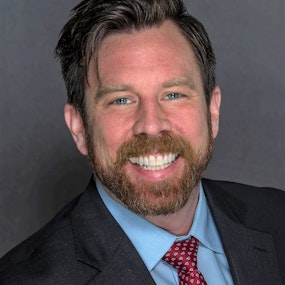
Peter Hoffman
Managing Attorney, Neighborhood Advocacy, Legal Services of Eastern Missouri
Peter Hoffman manages the Neighborhood Advocacy program for Legal Services of Eastern Missouri. Neighborhood Advocacy provides free legal services to prevent and eliminate blighted, vacant, and abandoned property. Peter began his legal career in Kansas City where he helped to create Legal Aid of Western Missouri's "Adopt-a-Neighborhood" program connecting urban neighborhoods with volunteer lawyers. He served as that project's director until moving home to St. Louis in 2018 to found the Neighborhood Advocacy program.
Peter received his JD/MPA from the University of Missouri-Kansas City with an emphasis in Urban, Land Use, and Environmental Law. Peter’s articles, “Bringing Self-Empowered Revitalization to Distressed Neighborhoods” published in the Journal of Affordable Housing and Community Development Law, and “Legal Services and Pro Bono Lawyers Help Neighborhoods Tackle Vacancy” published in the St. Louis Bar Journal, both spotlight the role pro bono lawyers can play in community revitalization.
New to the Podcast? Start listening to some of these episodes!
You can check out episodes by topic or season at the top and bottom of the page.















